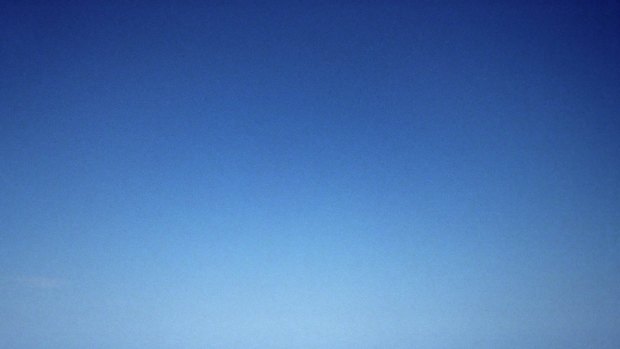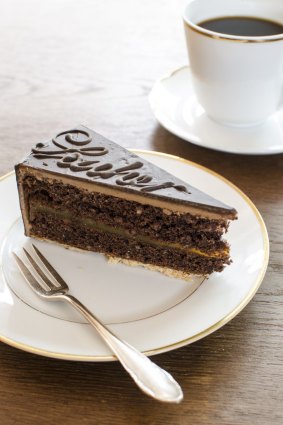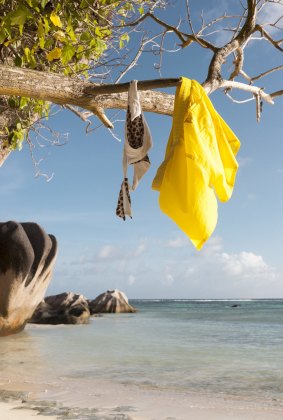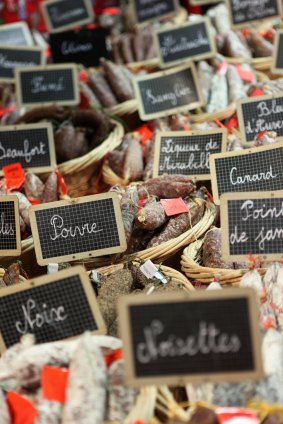This was published 9 years ago
Skinny dipping, airline seats and hotel toiletries: Writers confess their indecent travel obsessions

Public skinny-dipping - an indecent obsession?
Wi-fi access, airline seats, global roaming ... it seems the more we travel the more fixated on things we become, as Ute Junker muses, while seven of Traveller's writers were asked to confess their own most indecent travel obsessions.
Five frequent travellers, sitting at a table. Collectively, our recent destinations included Ladakh, Norway, Bhutan, the Galapagos, Namibia, Azerbaijan and Morocco. Which of these generated the most discussion? None of the above. No, what everyone wanted to talk about was the latest apps they had downloaded.
Apps have become an obsession, part of the secret arsenal that makes you an Expert Traveller. Not so long ago, your travel status was about where you had been. Now, it's about what happens along the way; which apps you use, whether you got upgraded, what you thought of the airline lounge.

Any chance to get naked in a bathhouse should be jumped at, especially in a sauna cabin in the forest, Suonenjoki, Finland.
As travellers, it seems, we have become more obsessed with the journey than the destination. You can climb Mount Everest, float down the Amazon on a raft, snorkel in Antarctica, but if you really want a rapt audience for your holiday tales, score an upgrade, preferably to first class. Your audience will ply you with questions about the experience: the pyjamas, the showers, the free-flowing French champagne.
Airline lounges are another popular conversation topic: the showers, the spas, the food. Then there's the debate about which seat to book on which aircraft. I spend more time in the air than most, and I am constantly amazed by the number of people who seem to carry seating plans for a range of aircraft in their heads.
Other perennial topics include which airports, cafes and hotels offer free wi-fi; the best photo filters for your mobile phone; and the most cost-effective way to call home from overseas. We're all still looking for an app for that.

Hard to resist: Taking moisturiser is OK, but the linen.
Are we becoming more superficial? I would argue we're becoming savvier. With the array of information available, it's easier than ever before to book the perfect holiday. No wonder we are obsessed with those things – the long, energy-sapping flights, those sky-high wi-fi and phone bills – that remain out of our control.
CHART TOPPERS
I have a world map on my wall. My best mate, Green, has a world map on his wall in London. Both maps are covered in cotton lines and small red pins depicting flights and destinations, and both are updated zealously according to strict rules. For instance: Pins may be placed on a map after a visit has occurred OUTSIDE an airport. Otherwise a TRANSIT is deemed to have occurred and may only be represented by a headless pin.

What's not to love about dessert?
Long haul flight paths depicted on the map MUST conform to actual paths taken by civilian aircraft. Exaggerated lines will be censured. Map projection is NO EXCUSE. Cotton shall be black and adhere to a modest and uniform gauge. Exuberant or unnecessarily manifest twines are CONTRARY to the spirit of the enterprise.
My wife, who is not really part of this, regards the map obsession rather unkindly as a "bunch of wank". But it has history – over 39 years to be precise. Green and I met aged 11. He had a map on his bedroom wall with pins recording where his dad travelled for work; I copied the concept to record some minor travels of my own including a holiday to the US and a £10-Pom migration experiment by my parents when I was a baby. (To this day, these lines are derided by Green as "pre-natal travels".)
After university I went backpacking with Green. Something of a weird savant when it came to airline scheduling, he rose to the challenge of booking insane non-direct routes to make the lines more interesting. He practically wrote his name over the Malay Peninsula – a minor cat's cradle that's still evident on my map.

A deserted tropical island, a beach towel and plenty of SPF 30 - time to strip off.
By our late 20s Green had gone to work for airline ground staff and I'd moved to Australia. The maps entered a new and dangerous phase as each of us tried to plot more extravagant lines, plant more exotic pins and ultimately satisfy one question: whose map looks better?
Long before selfies and emails, I actually took a photo of mine, got it developed and posted it to London. On opening the envelope, Green took one look and let it fall to the floor. He stepped over the photo with its single line going off-map into Antarctic territory muttering, "you bastard".
He got the last laugh, though. At the new Millennium, I was back in London working on the travel desk of a London newspaper and secured him a job as a travel writer which saw him travelling more than ever. I left after three years but he stayed on for 14 – and today his map is sagging with great ropes of cotton, groaning with pins, a testament to the 135 countries he's visited and the 1.5 million miles he's clocked.

Examples of the vast array of French sausages.
Green and I turn 50 this year and we still crow over a new pin, or grouse when a trip retraces over an old flight path, in fact it's the rare conversation that doesn't include the wary question, "Did y'get a new line?" Truth is, the maps are our legacy, and not because they record our travels. It's because they chart an extraordinary friendship.
Max Anderson
TIPS FOR THE MAP-MINDED
■ There are different ways of projecting a 3D sphere onto a 2D surface and all affect how your lines appear. (I use the 1855 Gall stereographic.)
■ If you do heaps of trans-Pacific crossings out of Australia, consider a map with Australia (180 degrees longitude) at the centre. Greenwich-centred maps will necessitate lines going off-map on one side to reappear on the other. Boring.
■ Beware the "hub pin calamity". It's when your home pin turns into a maypole, stressing the pin; if it comes out, taking all those lines with it, you're screwed. Not unrelated, beware children, pets, and wives who like to dust.
AISLES OF PINES
I like having the option of making a quick exit. I prefer the cinema seat nearest the door, in case the film is boring, confusing, violent or unfunny and coffee and/or alcohol are suddenly more appealing than finding out how the story ends. On a bus, I choose a front seat. Let the cool kids sit up the back.
In the front I get the best view, and can promise myself that when the bus misses the bend and rolls down the ravine, I'll be the man who sees it coming, braces himself, uses the emergency hammer to shatter the windscreen and heroically helps those who foolishly selected the rear pews.
On a plane, it has to be an aisle seat. Nobody wants that middle seat, though there are some who will put up with it so they can hold hands with a partner and gallantly help open the peanuts. My regular travel companion and I like to sit across the aisle from each other, within hand-clasping distance in case of disconcerting turbulence.
From an aisle seat I can stroll to the business class curtains and back, pluck the sleeve of a passing cabin attendant to ask for my glass to be refilled, and sneak to the toilets before the after-dinner queue has formed. There's no need to inconvenience the gentleman who's trapped by seatbelt, blanket, headphones, laptop and dinner tray, or clamber over the woman whose 12-hour sleeping pill has kicked in.
Getting an aisle seat is well worth a little trouble, I think, as the cabin crew arm the doors for takeoff and I smugly deposit pillow and reading matter in the empty middle seat beside me, glad that I haven't squandered any of those treasured frequent flyer points on a totally unnecessary upgrade. Then the clouds part and the lucky bastards in the window seats get a once-in-a-lifetime view of the sun shining on the Alps. Damn
Richard Tulloch
TIPS FOR AISLE-SLAYING
* Choosing seats requires planning. Pay attention to the opening time of online check-in. Often it's 48 hours before the scheduled departure, but beware – it can be 36 or 72 or 24 hours. As soon as the clock ticks over to the magic minute, be online, with flight details, frequent flyer number and booking reference already scribbled on paper.
* For some mysterious reason airlines fill the front seats first, so if there's any chance of a vacant middle seat, it will probably be up the back near the toilets.
* It can go wrong. Hotel wi-fi can fail. The airline website can refuse to let you log on from Kazakhstan. Cut-price European carriers don't even allocate seats. In such cases, get to the airport four hours early and hover below the departures noticeboard waiting for a check-in desk to be allocated. Then run.
THE NAKED TRUTH
Here's the thing about being a travel journalist: you have to be willing to give it a go. Doesn't matter whether it's crossing a swaying rope bridge in the jungle, or gulping down fermented soy beans for breakfast: you're here to get a story, and you'll never do that if you say no.
Which is how I ended up naked in a Finnish sauna. I was in Helsinki for a food festival, memorable both for the friendliness of our hosts and the copious amounts of freely flowing koskenkorva, the Finnish take on vodka. Probably I'd already had a few when our hosts suggested we should try a real sauna experience – done, as the Finns do, without swimming costumes – so I happily hopped into the bus.
The sauna contingent, it turned out, consisted of me, a journalist from New York, and a truckload of obese Russians.
Turns out, I loved every part of the experience. Lolling around naked in a scorching room. Running down the jetty to plunge into the icy lake. The shock of the landing. The adrenaline high afterwards. Even the somewhat ridiculous sight of naked Russians roasting sausages over the fire. I was hooked.
Since then, wherever I go, I seek out opportunities to get naked. They are more common than you might think. Korean bathhouses, Turkish hamams, Russian saunas – once you have tried them all out, you realise just how strange the Anglo-Saxon hang-up about nudity is.
Every culture has their own bathhouse practices, from a gentle soaping with a pillow case full of bubbles to a beating with a fistful of birch twigs. I enjoy them all. I love the sense of ritual, and the complete lack of hang-ups. Bathhouses are filled with people of every size and shape, and there's an acceptance that it's all just flesh.
There's also an undeniable freedom associated with nudity. Whether it's water gliding the length of your body or a fresh breeze playing around you, it's a rich physical sensation. Which is why my perfect chill-out day involves a secluded spot – a private pool villa or, even better, a deserted tropical island – a beach towel and plenty of SPF 30.
Nonetheless, there are places I'd draw the line. I'm unlikely to ever take up the European trend of naked hiking, for instance. To me, once you have thrown on hiking boots and a backpack, you have lost the sense of freedom that was the point of the exercise.
Meanwhile, I'll make do with bathhouse sessions and with swimming laps in my favourite indoor pool. Yrjonkatu Swimming Hall not only has gorgeous art deco interiors, but also regular gender segregated swimming sessions, when swimming costumes are optional. It's in Helsinki, of course. When it comes to nudity, you can always count on the Finns.
Ute Junker
TIPS FOR BARING ALL
* Sauna newbie? Start in the lowest temperature room and work your way up.
* In some European hotel saunas, swimsuits are optional. In others, they are banned. Check the hotel directory.
* If the entrance fee is remarkably low, the services will be too. I discovered – too late – that one neighbourhood sauna in St Petersburg doesn't supply towels. I had to dry myself with my handkerchief.
INTESTINAL FORTITUDE
Weirdly, the smell turns me on, rather than off – it's like a slow dance of death with a knife and fork. I'm talking about eating andouillette, an ancient French regional sausage made from the large intestines of the noble pig. Crisped under a grill and served with a smooth, velvety potato puree and a creamy mustard sauce, it's utter heaven on a plate. That's if you can get past the aggressive aroma of stale urine mixed with sweet spices and pork fat. Millions can't, but those who can are hooked for ever more.
I've been obsessed with this pissy, stinky snag for 30 years now. Once I'd read about it, I had to have it. My first was in a bistro opposite the railway station in Lyons, a city known as "the stomach" of France. It was milky, nutty, sweet, savoury, delicate and powerful. Back home, I studied andouillette and attempted to make my own. I bought pig's intestines, cleaning the long, snaking tubes of pig's innards by sending great whooshes of water through them that sprayed half the house and most of my wife with their smelly contents. It guaranteed that I would henceforth seek out those better qualified to do so.
Luckily, a group of French andouillette lovers formed the Association Amicale des Amateurs d'Andouillette Authentique (AAAAA) in 1988, to protect standards and to honour those establishments serving the true, original andouillette. The "Five A's" above a restaurant's doorway have always meant more to me than Michelin's "Three Stars". I have chased those little AAAAA's throughout Paris and across France, and most recently to Troyes, a crazy-beautiful little medieval town of cobble-stoned streets and gothic churches in the Champagne-Ardennes district, where the andouillette tradition remains strong.
There, I studied with andouillette master Christophe Thierry of Charcuterie Thierry, home of the finest artisanal andouillette since 1969. I learnt to cut the intestines into long strips and wind them into loops like skeins of wool, then thread them onto a little string and pull them with great sleight-of-hand into an intestine casing to create the pale, lumpen sausage of my dreams. It is this labyrinthine structure that virtually explodes onto the plate when the skin is pierced that is the sign of the true andouillette. For three days, I literally stuffed my own intestines with intestines at every meal, necessitating countless bottles of the local Champagne, Rose de Riceys, and beer.
I fear for the future of the andouillette, however, because the people who love it and fight for it are disappearing. It belongs to another age, when respect, quality, tradition and pride meant more than celebrity and status; when the provinces of France were like different countries with their own cuisines and cultures, and when truly regional foods existed.
Terry Durack
TIPS FOR SAUSAGE-SEEKERS
* Go to Paris and track down a genuine AAAAA-rated andouillette made by the renowned Christophe Thierry in Troyes. Try Racine, 8 Passage Panorama 2nd, and Le Verre Vole , 67 rue de Lancry, 10th.
* Take the train from Gare de L'Est in Paris and make the 90 minute trip to Troyes to check out where it all began. Worship at the shrine of Charcuterie Thierry, 73, avenue Gallieni, Sainte-Savine. Then go straight to Au Crieurs de Vin, a great little natural wine bar run by Jean-Michel Wilmes and Nicholas Vauthier at 4 Place Jean-Jaures, and order your andouillette. Die happy. See en.tourisme-troyes.com aube-champagne.com.
* Can't get to France? In Melbourne try the excellent andouillette Parisienne with mustard sauce at France-Soir, 11 Toorak Rd, South Yarra. See france-soir.com.au
THE PANE, THE PANE
I've always found stained glass entrancing. It glows and throbs inside gloomy monuments and splotches everything it falls on with red, green and blue. It seems magical that sand can be transformed by fire into glass, then into works of art by a craftsman's skill. I love the colours of stained-glass windows, especially those from the Middle Ages.
Medieval stained glass has limited colours, but they're pure, deep and simple. Such colours were produced by adding metallic salts to the liquid glass: copper or gold for red, copper oxide for green, cobalt for dark blue. The particular deep blue of the windows in Chartres cathedral in France (cathedrale-chartres.org) has never been replicated; you can only sit in the aquarium blueness and marvel.
My first tip for indulging in stained glass is hardly revolutionary: head to a European cathedral. But it isn't only the colour that entrances me. Stained-glass windows provide an illuminated story portraying biblical scenes and messages to an illiterate population. The stained-glass of cathedrals was inspired by Arab filigree windows, which arrived in Europe through Spain. The famously beautiful rose windows of European churches such as Lincoln cathedral (lincolncathedral.com) and Saint-Chapelle in Paris (sainte-chapelle.monuments-nationaux.fr) were inspired by the rosettes and octagonal windows of Umayyad palaces. Mosques too, satisfy my greed for glass. Istanbul's Blue Mosque has lovely examples, but winter prayer room of Nasir-ol-Molk mosque in Shiraz is utterly beguiling. Bejewelled pink and red light from stained-glass windows competes with the colour of the Persian carpets flung across the floor.
During the Renaissance, artisans painted the surfaces of colourless glass, creating a greater range of detail and colour. Stained glass became prettier and cheaper, but the rich glow of earlier glass was lost. You see this type of glass in decorative glass panels over doorways in old Australian homes. On a grander scale, it was put to good use in the 19th century in public buildings such as train stations or Le Printemps Haussmann department store in Paris (printemps.com), whose domed stained-glass ceiling is gorgeously gobsmacking.
A train station is a good place to find stained-glass splendour. Some of Moscow's subway stations have great Communist propaganda in glowing glass. The huge 1940s panel in Bilbao's Abando station in Spain is fantastic, and there are lovely contemporary examples at Shinjuku in Tokyo.
On a smaller scale, it's hard to resist American designer Louis Comfort Tiffany's Art Nouveau lamps and windows. Tiffany pioneered the use of coloured opalescent glass that had natural iridescence, rather like a butterfly's wings. The Metropolitan Museum in New York (metmuseum.org) has some of his magnificent windows. I dare you to walk past and not be stunned. His window showing an autumn landscape is like a glimpse into another and more magical world.
Brian Johnston
TIPS FOR A SHARD LIFE
* It isn't only churches that have good stained glass: head to mosques and synagogues for more.
* Look up in European and North American train stations, since many feature stained glass.
* A tripod and zoom lens will capture the best photographs. Stand as far away as you can to minimise distortion.
MY MAIN SQUEEZE
It started when I was backpacking. Fifteen months of self-imposed destitution and frequent squalor were, when the stars aligned, broken by occasional stays in Very Nice Hotels. When I say stars aligned, I mean I organised the stays as part of reviews or wider travel writing; my partner and I travelled for so long because we scraped by on a pauper's budget. The very first place we stayed during our long trip was the Langham in Hong Kong and so perhaps that was the scene of the original sin. We stayed there three nights and, knowing that far humbler accommodation would make up the majority of our time on the road, we set about pilfering all of their toiletries. They smelled so nice, you see, and they were just so … free.
Over the next few weeks we would sneak off to shared showers in putrid hostels and hold those magic little bottles close like secrets. But then one day I forgot them as we rushed to catch a bus. The argument lasted about a week. From there I vowed to rob, steal and purloin any and all shampoos, conditioners and shower gels I came across. Every moisturiser would be swiped. Every bar of soap looted.
At one point we stayed at Raffles Grand Hotel D'Angkor for two nights, then spent the next two in a $5 hostel, a place so rotten the desk fans used to cool the room were too feeble to blow through the mosquito nets. But we had the aromas of Raffles with us and when we breathed deep it would transport us back to that wonderful place.
That was four years ago and though I am no longer backpacking, I find it impossible not to keep taking toiletries. I do, however, have a few rules. I don't lift from independent hotels as this feels something akin to taking the owners' private property. Also, some places – particularly places that market themselves as earthy and organic – have an annoying habit of decanting their products into porcelain bottles. I'm yet to have any of those. But nonetheless, my thievery guarantees this much: if you come to stay at my house, you may be sleeping on the couch, but you'll get a welcome pack to rival any top hotel around the world.
Jamie Lafferty
TIPS FOR TAKING THE TUBE
* If you're staying in the same room for a few days, be sure to make the toiletries disappear each day. Many hotels won't automatically replace them if they're still half full.
* If you can, befriend the maid. She is the keeper of the cart and gateway to a whole universe of petite bottles of swag.
* Remember that most luxury hotels are multimillion-dollar corporations and they can definitely afford you swiping some shampoo. However, please don't use my kleptomania as justification for stealing anything bigger. Moisturiser is OK; the linen is not. Taking sewing kit is fine; taking the stereo will get your arrested.
A TRIFLING MATTER
I rarely buy souvenirs when I travel, though I always come back with a few pounds of excess baggage. Mostly this is because I've never met a dessert that I didn't like. I blame my mother for this – a woman who once went to Manhattan and made it her unofficial duty to rid the island of cake. Now that I live in New York myself, sometimes I text her pictures ("You missed one"), and then buy it, just to honour her. Actually, the dessert thing is out of control. My body is constantly changing, like volcanic Hawaii. I can point at parts of it and say, for example: Churros in Mexico City; bread pudding in London; ovocne knedliky in Prague. My chin is a wonderland of bon bons.
Partly this is the result of professional courtesy. Whenever I begin to doubt whether I should, in fact, eat that slice of that Sachertorte in Vienna, I remind myself that this is a job, that I cannot give serious recommendations to you, Dear Reader, without having first consumed every sweet thing on the face of the earth.
Besides, I have also found there are other benefits beyond the endorphin rush. Seeking out dessert in travel can lead to delicious cultural encounters. For example, I recently wrote a story about pie in America. The story was pitched at the high concept level – "pie embodies the American dream" – but really, let's be honest, I just wanted an excuse to talk to strangers about pastry, my great love.
To report this story I travelled to Pie Town, a teensy highway settlement in the middle of New Mexico. In a roadhouse named the Pie-O-Neer, I met "the Pie Lady of Pie Town," a friendly woman who scratched her face with the handle end of a mixing spoon. She slid a piece of apple and chilli pie across the counter, and then proceeded to tell me about a brutal murder that had just happened down the road, causing black helicopters to circle overhead as they searched for the fugitive. The Pie Lady said she had a shotgun tucked away, with the first chamber blank and the second loaded to kill. We would be safe in the Pie-O-Neer – safe with all of the pies.
Would that have happened if I'd gone looking for a hamburger? Doubtful.
Lance Richardson
THREE TIPS FOR JUST DESSERTS
* To find the best version of a regional dessert – gelato in Rome, for instance – forget advertisements and guidebooks and ask a local for advice. Homemade is usually best.
* There are no calories in travel. Make that your mantra. Besides, all that physical movement across the world cancels everything out anyway.
* There are often characters behind the creation. Ask who made it. Use dessert to open a conversation.
Sign up for the Traveller newsletter
The latest travel news, tips and inspiration delivered to your inbox. Sign up now.